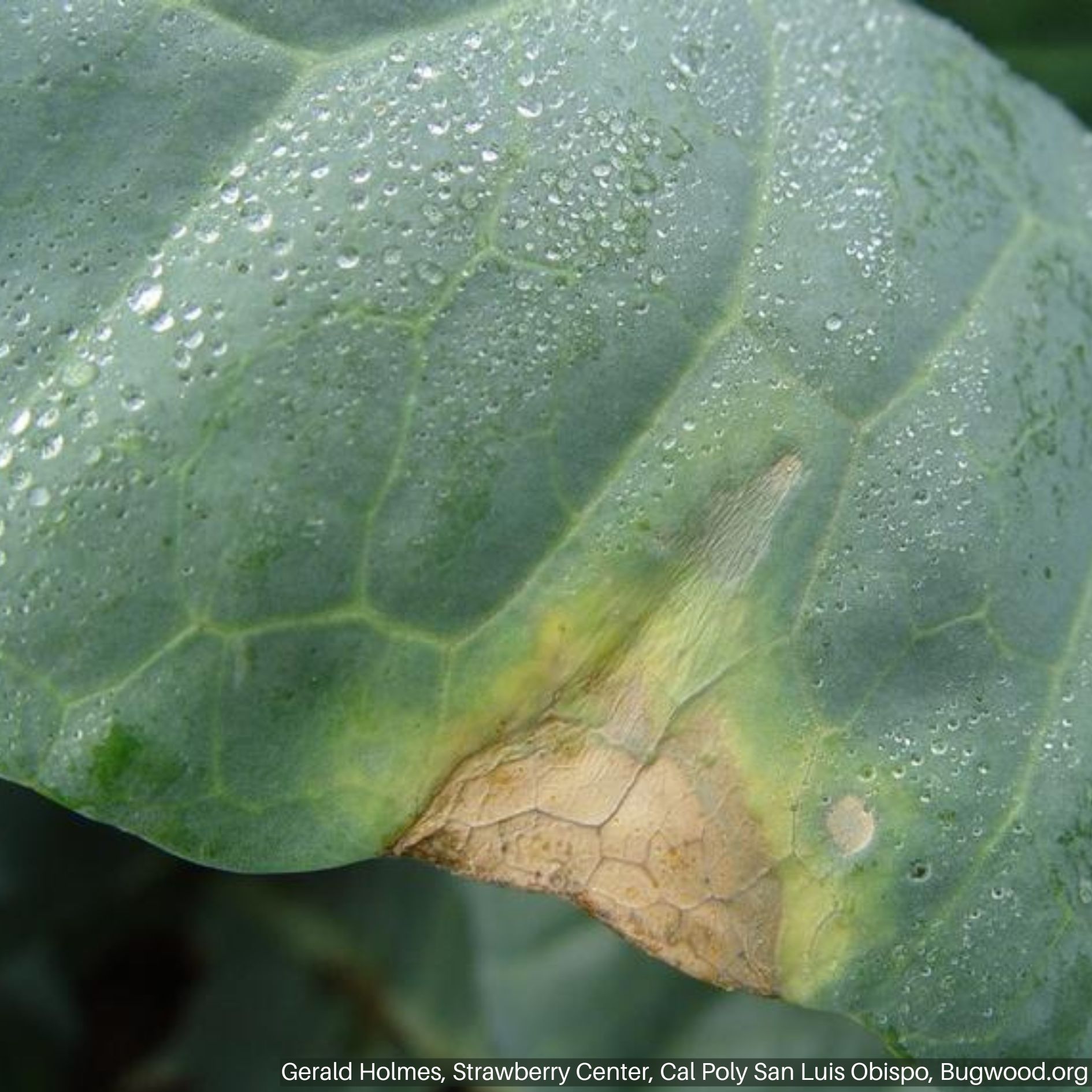Black Rot
 Black rot foliar symptoms on a cabbage.
Black rot foliar symptoms on a cabbage. Broccoli plant with v-shaped yellowing and necrosis.
Broccoli plant with v-shaped yellowing and necrosis. Black rot symptoms on kale leaf.
Black rot symptoms on kale leaf. Cabbage plant with symptoms of black rot.
Cabbage plant with symptoms of black rot.HOSTS
- Brassicas
DESCRIPTION
Black rot is often introduced to fields through infected seeds, but can also be spread by infected plant debris, contaminated water, and tools. The bacteria can survive for up to two years on contaminated plant debris.
BIOLOGY
The bacterium invades the host plant through pores on the foliage and wounds. Once inside the plant, the bacterium will move into the stem and roots of the host, becoming systemic. Xanthamonas campestris pv campestris produces a viscous sugar that blocks the host's xylem, which moves water throughout the plant. Secondary infections of soft rots are common once a plant is infected with black rot.
SYMPTOMS
- V-shaped lesions on leaf margins
- Wilted or necrotic foliage
- Darkened veins on plant roots
GENERAL MANAGEMENT
- Use certified disease-free seeds
- Avoid watering practices, such as overhead irrigation, that result in wet soil and plants for prolonged periods
- Ensure proper ventilation by spacing plants apart
- Rotate brassicas with non-susceptible crops
- Remove infected plants and crop residue from gardens
- Sanitize tools and equipment
Precautionary Statement: Utah State University and its employees are not responsible for the use, misuse, or damage caused by application or misapplication of products or information mentioned in this document. All pesticides are labeled with ingredients, instructions, and risks, and not all are registered for edible crops. “Restricted use” pesticides may only be applied by a licensed applicator. The pesticide applicator is legally responsible for proper use. USU makes no endorsement of the products listed in this publication.

